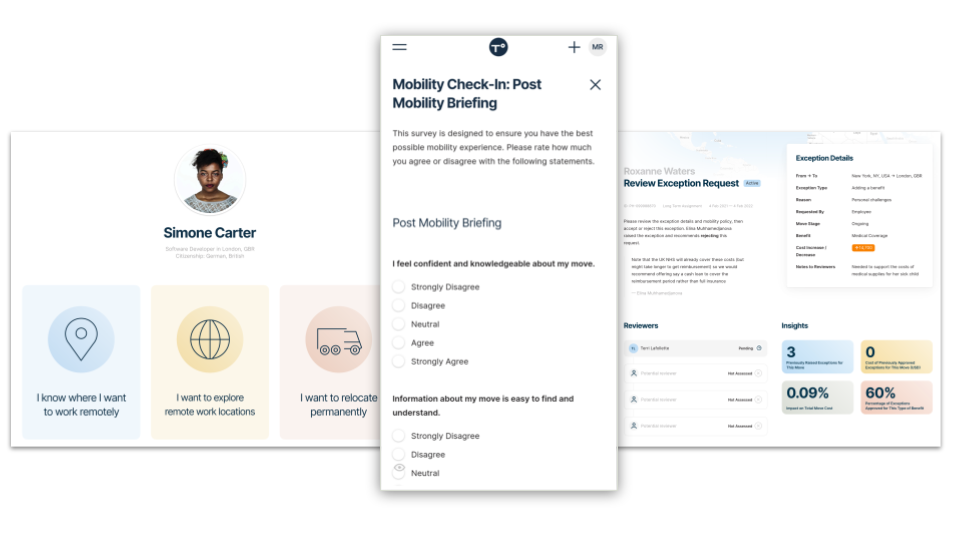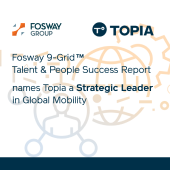
Global mobility in times of crisis
The wake of the COVID-19 pandemic has upended the global economy. This pandemic has had a significant impact on many businesses that have, consequently, made some tough decisions. However, the effects of this global crisis will not last forever. We have faced many challenges in the past and will inevitably face more in our lifetime. How we choose to react is up to us.
Today we are taking a look at the role of global talent mobility in a crisis. Let’s explore how to assess your mobility program’s crisis preparedness, how to increase your response effectiveness, and how to set your company up for post-crisis success.
The role of a talent mobility team in a crisis
Under normal circumstances, talent mobility teams deal with complex mobility landscapes every day. In addition to regular changes to tax and immigration legislation, talent mobility teams are faced with challenges such as Brexit, the Posted Workers Directive, and keeping track of business travelers across the globe. Their roles and responsibilities are complex and nuanced and vary day-to-day.
In times of crisis, however, the role of a talent mobility team becomes increasingly complex. A crisis is defined as a time-sensitive situation that created deviation from expected routines. A crisis can include a natural disaster, a terrorist incidence––and yes––a pandemic like the one we are all currently experiencing.
The role of a talent mobility team in a crisis is an important one. A talent mobility team needs to provide support for the health and safety of global employees. They need to keep track of changing legislation, business travelers returning home early or becoming displaced, and identifying who should carry the cost burden of these changes. Without a reliable system and streamlined process in place, these responsibilities may fall through the cracks or become unclear.
How to assess your talent mobility program’s crisis preparedness
In a recent poll we conducted, 44% of respondents stated that the COVID-19 pandemic had impacted their business severely. Some of the key challenges faced during this time include employee health and safety, the potential impacts on tax and immigration laws, and your duty of care as an employer.
Additionally, we see that many businesses are:
- Returning assignees home early
- Incurring additional quarantine housing costs
- Struggling to identify who should carry the cost burden (employee or employer)
- Allowing employees to return to home location indefinitely
- Lacking the ability to track all displaced employees effectively
- Seeing assignees turning up in unexpected places
Without a robust crisis management plan in place, your business might feel like it is floundering. To assess your talent mobility program’s crisis preparedness, consider your company’s strategy, data management, and processes.
Strategy
Does your company have a crisis strategy? By understanding what is already in place, you can make decisions on how to improve your crisis strategy. A well-defined strategy, underpinned by robust processes ensures clear operating procedures. It is also crucial that everyone involved is extremely familiar with the strategy to ensure effective execution.
Data
What is the quality and availability of the data you need to be able to react quickly? Is it spread across multiple spreadsheets with multiple owners? A single source of information is the most efficient way to respond rapidly and effectively in times of crisis.
Processes
Are your crisis processes publicized and readily available? Are they regularly reviewed and easily accessible? Having crisis processes that are readily available and regularly reviewed is an effective way to respond to a crisis swiftly.
How to increase your crisis response effectiveness
To quickly and effectively respond in a crisis, your talent mobility team first needs to identify the answers to these critical questions:
- How many people do we have on the ground right now?
- Do we need to account for their families?
- Do we have any business travelers?
- What vendor support do we have in place?
Once they have answered these questions, your talent mobility team can focus on the near-term issues. These questions can include:
- Is there any impact on the employee’s immigration and tax situations? If so, how will we address these?
- What talent (if any) are we planning on moving into/out of the region?
- Is there going to be a business impact? What is the cost, time, project completion dates, etc.? If so, how can the talent mobility team proactively minimize the business impact?
Then, once the near-term crisis has been averted, you can shift your focus to longer-term impacts on the business, including:
- What is our crisis exit strategy?
- What is the long-term effect of this crisis, and what can we do to mitigate it in the future (i.e., plugging skills gap with assignees from other countries)?
- Do we know the actual total cost of the event?
How to set your company up for post-crisis success
While it might take a bit of time to see the global economy return to “business as usual,” global mobility isn’t going anywhere. If this pandemic highlighted some holes in your company’s crisis preparedness strategy, use this time to develop some benchmarks for what post-crisis success means for your business.
To understand what success looks like within your organization, you must first define the success criteria. Would post-crisis success be defined as the ability to keep costs contained? Or perhaps proactive solutions to help reduce potential compliance exposure? By defining what success looks like in your company, you can begin to set the stage for your strategy during the next crisis.
After you have defined the success criteria, do a full debrief. While it may seem challenging to find the time to complete a proper post-mortem, it is a necessary step to understanding the crisis in retrospect. Use this opportunity to assess the strengths and weaknesses of your crisis preparedness plan. Dig into the data and formulate a full debrief to review the crisis plan in hindsight.
Once you’ve completed these steps, you may begin to realize the value of talent mobility technology in a crisis. Talent mobility technology streamlines the data process from end-to-end, minimizing data duplication and manual effort from your talent mobility team on the ground. It also ensures completeness and accuracy of data across all your business systems and vendors and connects with broader HR data. Finally, talent mobility technology allows you to leverage sophisticated and robust data and analytics to drive more significant insights during the next crisis. How your business prepares for the next crisis is critical––because there always will be a “next time.” For more information on this topic, check out our recent webinar, Global Talent Mobility in Times of Crisis.



